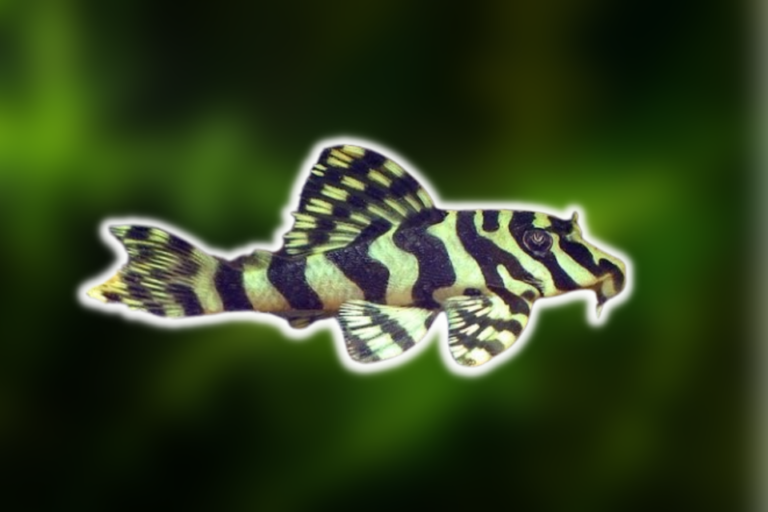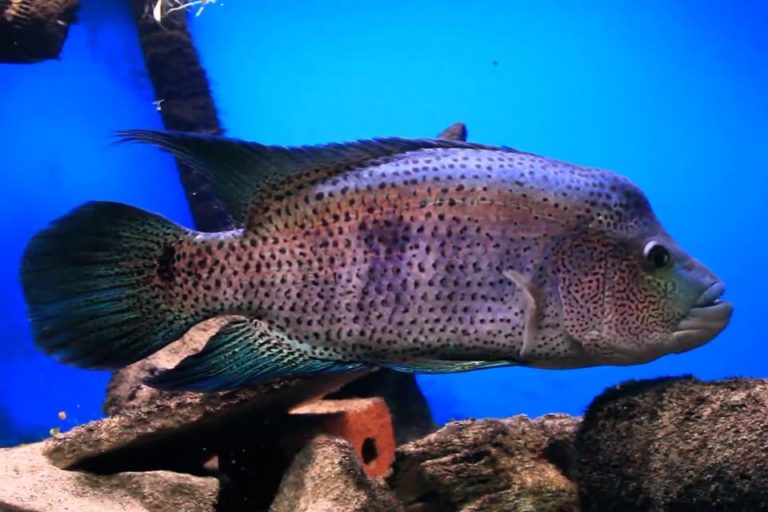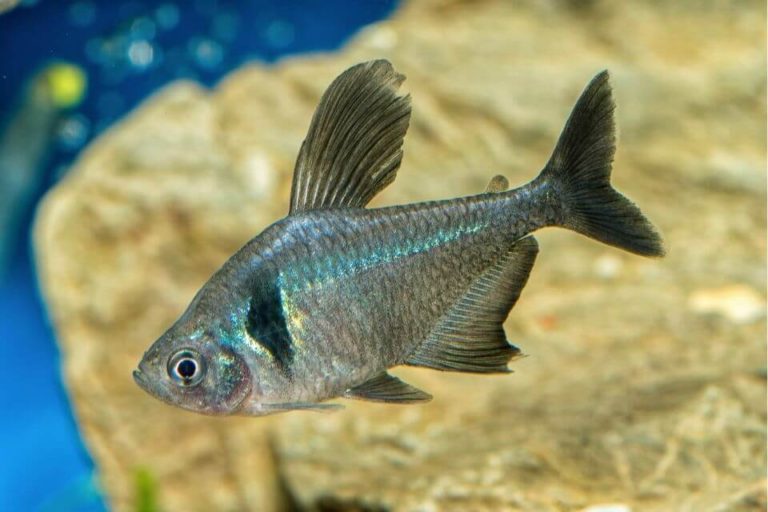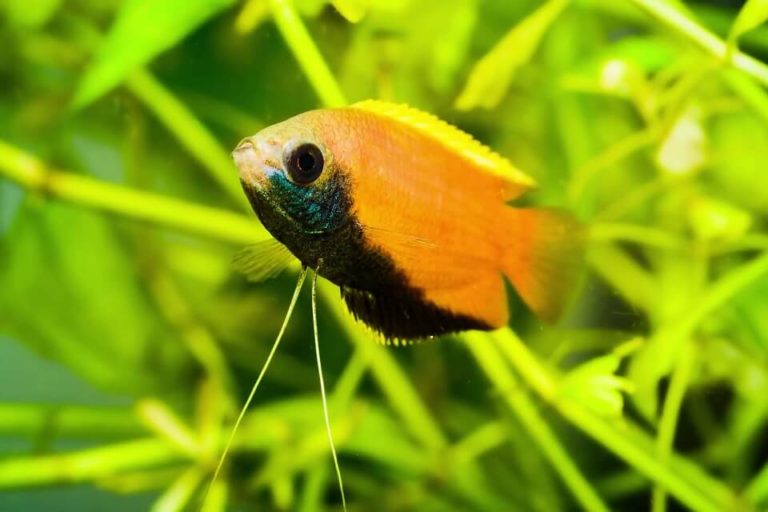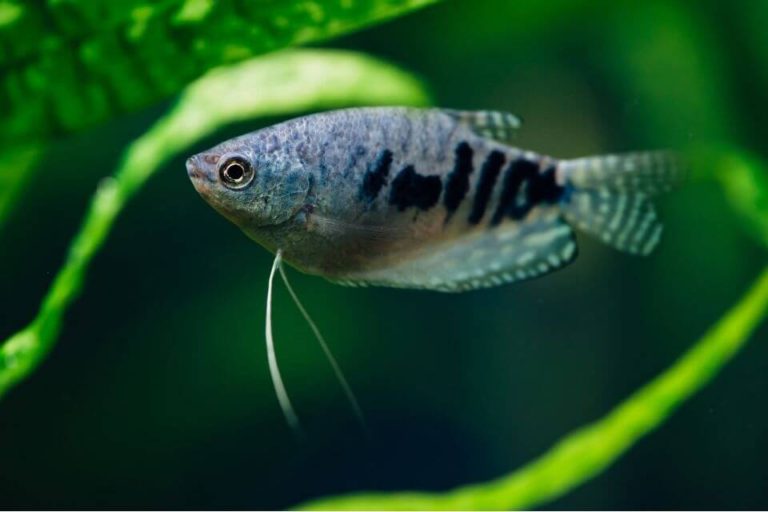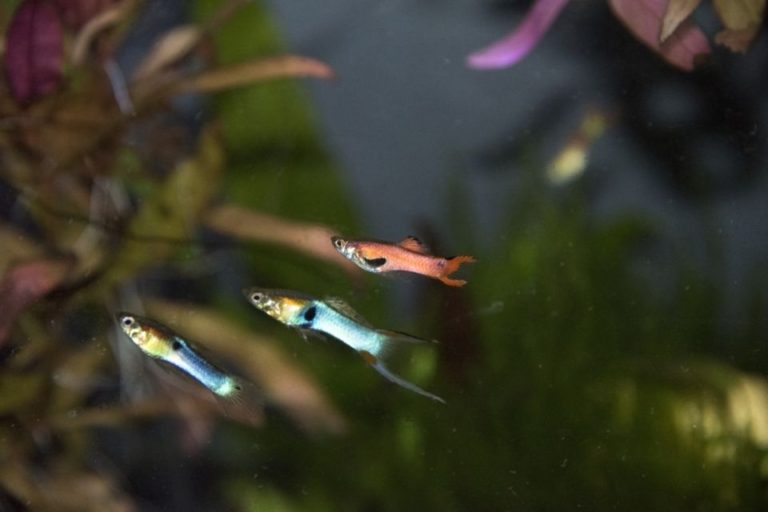Pike Cichlid Care Guide 101: Tank Size, Tank Mates, Size , Food and Care

The Pike Cichlid is also known as Crenicichla lepidota is an attractive, striking fish that is a popular and well-known member of the Cichlidae fish family. Although predatory by nature, they have been successfully kept in community aquariums with other non-aggressive fish for decades.
In the wild, their natural environment consists of warm water rivers and lake systems in South America. In captivity, it’s best to keep them in a large tank with plenty of places to hide and swim around.
They are relatively easy to care for provided their water is regulated for the parameters they need to thrive.
In this Pike Cichlid care guide, we will provide everything you need to know about keeping this Cichlid species in your tank, from choosing the right equipment to feeding them and keeping the water clean.
We will also provide a species profile so that you can learn more about these fascinating fish.
| Quick Facts: | |
|---|---|
| Common Names : | Pike Cichlid |
| Origin : | Tropical water bodies in South and Central America |
| Family : | Cichlidae |
| Scientific Name : | Crenicichla lepidota |
| Care Level : | Experienced |
| Temperament : | Aggressive |
| Social : | Territorial |
| Diet : | Omnivores |
| Size (average) : | 6 - 20 inches |
| Lifespan : | Up to 10 years |
| Breeding : | Egg layer |
| Minimum Tank Size: | 90 gallons |
| Tank Environment : | Freshwater, Gravel or Sand substrate, Driftwood, and Rocks for decorations, Hardy live plants or Silk plants |
| Temperature : | 74 – 80 F (23 – 26 C) |
| Water Hardness : | 5 – 20 dKH |
| Water pH Level : | 7.0 - 8.5 |
Species Overview
Pike Cichlid is an exciting species of fish native to South America. They are mostly found in the Amazonian region in rivers, freshwater lakes, pools, and streams.
Their natural habitat ranges from temperate climates to tropical areas, which explains why they can be found in both aquariums and ponds around the world.
There are 93 different species of Pike Cichlid discovered so far. They are measured from 6 inches to 20 inches in length, but most Pike Cichlid varieties will not exceed 12 inches.
They have a distinctive long body with a narrow snout that gives them their name. These fish species are carnivores and will feed on smaller fish if given the opportunity.
When they see their prey, they attack by ramming into it with great speed. In the wild, they are known to be aggressive and territorial fish. They will defend their territory against other fish, as well as predators such as birds and mammals.
In aquariums, they can be just as aggressive towards other tank mates. So it is important to choose compatible fish if you plan on keeping them.
They are a popular choice for aquariums because of their interesting behavior and beautiful coloration. They can be easy to care for if you know what you’re doing, but they require a large tank with plenty of hiding places.
These Cichlid species are not recommended for beginners. You must have some experience in fishkeeping to keep these Cichlid species in your aquarium. Because it is not easy-care fish species
Pike Cichlid Size
Pikes grow very quickly, attaining adult size in just 6 months. The maximum size they can get will depend on what species you are dealing with. The biggest Pike Cichlid variety can grow and measure up to 20 inches in length.
Most specimens will not exceed 12 to 15 inches. The smallest Pike Cichlid size is measured up to 7 inches in length.
Pike Cichlid Lifespan
Pike Cichlid lifespan is up to 10 years in general. This is much longer than other tropical fish, and they can be quite expensive to care for depending on their tank requirements.
The larger the tank, the more expensive it will be over time as these fish love to eat, and you will need to stock up on lots of live food items to keep them healthy.
Appearance and Colors
Pike Cichlid has a torpedo-shaped body and some beautiful patterns. They have different color patterns, varying from dark brown to light gray, depending on their region of origin.
Some species have beautiful black and orange Zebra stripes that run across the length of their body while others are plain silver.

Behavior & Temperament
These fish displays high levels of intelligence and social behavior compared to other types of fish. They are typically very active and enjoy swimming throughout the aquarium, exploring every corner.
These Cichlid species observe their tank with curiosity and may try to inspect them before they settle down in their new home. They have great personalities and will be protective of their territory, especially when breeding.
They interact with their owners when begging for food or when seeking attention. It is also worth noting that they are extremely aggressive fish overall, so should only be kept with peaceful community fish.
If you are keen, you will also note that they will occasionally flare their gills and display another body language when displaying aggression.
Pike Cichlid Care and Tank Setup
The best way of taking care of them is to provide them with a tank that is large enough. The minimum size for a Pike Cichlid tank size should be at least 90 gallons tank. These fish like to have plenty of room to swim, and they need a strong filter to keep the water clean.
They are omnivores and prefer a diet of live food. However, they can also be fed a diet of frozen fish food or pellets. Just make sure you provide them with a variety of foods to ensure that they are getting the nutrients they need.
Fish are often sensitive when they are introduced to a new environment, so it can take some time for them to settle in before they start acting normally again. As mentioned earlier, pikes are very aggressive and territorial so having a large aquarium is necessary.
Make sure you have enough hiding spaces for them to feel secure as this will help reduce stress levels. It is also important that you provide them with an area where they can bury their eggs as these fish are known to be avid cave spawners.
Something else worth noting is that the Pike Cichlid prefers well-oxygenated water that has a pH of around 6.5 to neutral.
Caring for Pike Cichlids can be a bit more challenging than other fish, but they are definitely worth the effort. With the right tank setup and diet, these fish will thrive and provide you with hours of enjoyment.
– Pike Cichlid Tank Size
It is a large fish and will require a tank that is at least 90 gallons tank in size for a single fish. Larger tanks can be used to keep multiple Pike Cichlids, but caution should be taken if they are housed with other aggressive fish.
When it comes to Pike Cichlid tank size, the bigger the tank, the better make them more freedom to swim well.
– Pike Cichlid Tank Setup
When setting up a tank for Pike Cichlid, you need to take into account the Substrate, Decorations, Filter, and Lighting. Let’s have a look at each of them.
- Substrate: For the substrate, you will want to use fine gravel or sand substrate. This will help keep the water clean and prevent large pieces of debris from collecting on the bottom of the tank.
- Decorations: It likes to have plenty of places to hide, so you will want to add some decorations such as rocks or driftwood. Just make sure that these decorations are not too small as they may get sucked into the filter.
- Filter: Pike Cichlids produce a lot of waste, so you will need an aquarium filter that is at least twice the size of your tank. Canister filters work well because they have more space for bacteria to grow on and keep the water clean. These filters should be cleaned regularly to prevent them from becoming clogged up with debris.
- Lighting: Pike Cichlids prefer a dimly lit tank, so you don’t need much lighting for your aquarium. A standard aquarium hood light will work fine as long as it provides enough light to see the fish and plants in your tank but not too much that it will overheat the tank.
– Water Conditions and Parameters
The tank should be kept clean with weekly changes up to 25% of the total volume.
- Water Temperature: 74 – 80 F (23 – 26 C)
- Hardness: 5 – 20 dKH
- Water Acidity: 7 – 8.5 pH
It is very important to keep aquarium water temperature levels in steady ranges. Using an aquarium water heater you will be able to control it.
– Common Diseases and Prevention
They can be susceptible to common diseases. In this section, we will discuss some of the most common diseases that Pike Cichlids can get, and how you can prevent them from happening in your tank.
ICH:
One of the most common diseases that Pike Cichlids can get is Ichthyophthirius multifiliis or ICH. This disease is caused by a parasite that attaches itself to the fish’s skin and gills and can be fatal if left untreated.
The best way to prevent Ick from occurring in your tank is to maintain high water quality and to keep the tank clean. If you do notice any signs of Ick in your fish, treatment with medication like copper sulfate is usually effective.
Swim bladder disease:
Another common disease that can get is swim bladder disease. This condition occurs when the fish’s swim bladder becomes inflamed or infected, which causes them to float upside down and lose control of their movements.
The best prevention method for this disease is to ensure that your water quality is high and that you are feeding your fish a balanced diet. If your fish does become infected with swim bladder disease, treatment with antibiotics may be necessary.
Dropsy:
This disease occurs when the fish’s scales start to protrude outwards, giving them a bloated appearance and making them appear larger than they are.
This makes it difficult for the Pike Cichlid to swim properly, which is why you should treat this disease as soon as possible before it becomes fatal. The ideal method of preventing this condition is to keep your water quality high and feed your fish a balanced diet.
Fin rot:
This disease is caused by a bacterial infection of the fins, which causes them to turn black or white and start falling off in large chunks. This can be fatal if not treated quickly, so it’s important to treat this as soon as possible.
The best way to prevent fin rot is to maintain high water quality and keep the tank clean. If your fish does develop fin rot, antibiotics may be necessary for a full recovery.
Gill flukes:
Gill flukes are parasites that attach themselves to the fish’s gills, causing them to become inflamed and infected. This can make it difficult for the Pike Cichlid to breathe properly and will eventually lead to death if left untreated.
This condition can be prevented through good water quality and regular tank cleanings. If your fish does develop gill flukes, treatment with medication like praziquantel is usually effective.
Cotton wool disease:
This is a bacterial infection that causes the fish to develop white patches on their body. These patches can eventually grow and cover the entire body, making it difficult for the Pike Cichlid to swim and feed properly.
The best way to prevent this disease in your tank is by keeping the water clean and maintaining high-quality conditions.
Hole in the head:
A hole in the head is a disease that causes lesions to form on the fish’s head, eventually leading to death if left untreated. To prevent this condition, you should maintain high water quality and keep the tank clean.
In addition to that, you should feed your fish a balanced diet will also be helpful.
These are just some of the most common diseases that it can get. By following these simple prevention tips, you can help keep your fish healthy and thriving in their tank.

Pike Cichlid Feeding & Food
Pike Cichlid are omnivores, so their diet will consist of a variety of meaty foods as well as plants. In the wild, they will eat live plants and small animals like worms or insects.
In a captivity environment, they can be fed pellets or flakes food along with frozen or freeze-dried bloodworms and tubifex. You should also try to feed your fish at the same time every day to establish a routine in which they can rely on being fed.
Gender Difference
There are no visible physical differences between male and female Pike Cichlid. The only way you can tell the difference is by looking at their vents. Males have a distinct genital papilla just before the vent.
Males are dominant over the females and will often establish their territory within the tank. They’re very aggressive towards one another, so it is best to keep them in separate tanks if they are housed together.
The biggest difference between males and females is that the male has a pointed genital papilla just under its vent while the female is more rounded.
Breeding Pike Cichlid
Pike Cichlids are not the easiest of fish to breed, so you may need to try it a few times before success is found. This is because they need soft acidic water with lots of vegetation for their eggs to be kept safe.
To breed Pike Cichlid you’ll need to mimic their natural habitat. Provide them with the moist sandy breeding ground along with lots of rocks and driftwood. You should also reduce the water level in your tank so that they can dig their nest easier.
They are mouthbrooders, so the female will tend to lay around 90 eggs at one time. The male will then fertilize them and protect them until they hatch. The eggs will hatch in about 4 to 5 days after being laid.
The male Pike Cichlid are very protective of their young, so they may become aggressive towards you or other fish in the tank during this time. You can feed them newly hatched brine shrimp.
Pike Cichlid Tank Mates
The ideal Pike Cichlid tank mates are Tinfoil Barbs, Silver Dollars, and large South American Cichlids. You can keep them in one tank as long as they do not attack and kill your Cichlid.
Very important to keep them in a larger tank with other tankmates to keep them in a community of fish.
Origin and Distribution
This species is native to Central America. They are found in the rivers and lakes of Guatemala, Belize, El Salvador, Honduras, and Nicaragua.
The distribution of these fish species is limited to certain areas of Central America. You won’t be able to find them anywhere else. They are relocated with utmost care and only to areas where they will be protected, and their environment won’t be compromised.
Frequently Asked Questions
The questions that we discussed will help you to know more about the Pike Cichlid.
Are Pike Cichlids Aggressive?
Yes, Pike Cichlids are very aggressive and will often fight with other fish in the tank until one of them is dead. It is best not to keep more than one male in the same tank unless you can provide them with sufficient hiding places to prevent further fighting.
Pike cichlid are popular as aquarium pets among Cichlid enthusiasts, but they are not for those who aren’t experienced with caring for large South American cichlids.
Does Pike Cichlid Eat Other Fish?
Yes, Pike cichlids are both predators and scavengers. Not only do they prey on other fish in the tank, but they will also eat dead fish or any leftovers that sink to the bottom of the tank.
Where to Find Pike Cichlid For Sale?
If you are interested in purchasing a Pike Cichlid, then your best bet is to get one from a breeder. They will ensure that the fish is active and healthy before providing it to their customers.
You can purchase Pike Cichlid from your local pet stores, or even online stores such as eBay.
What Is Lenticulata Pike Cichlid?
Lenticulata Pike Cichlid is a species of Pike Cichlid found in Central America. It has the same characteristics and behaviors as its parent species. It can be recognized by its smaller scales and colors that are more vibrant.
Its natural coloration consists of turquoise-green with red or purple markings on its dorsal fin.
They also grow larger compared to their parent species, growing up to a maximum of 15 inches. The average Lenticulata Pike Cichlid size is 7 to 9 inches long when kept in aquarium settings.
Lenticulata Pike Cichlid can be found in lakes and rivers throughout Central America. They are more common in the coastal lowlands. Lenticulata Pike Cichlid is known to be more active, so they make good pets for avid Cichlid hobbyists.
What Is Red Pike Cichlid?
Red Pike Cichlid is a species of fish found in Central America special in Columbia. It has the same behaviors as its parent species, but it can be recognized by its red-colors body scales that are more vibrant.
Its natural coloration consists of turquoise-green with red or purple markings on its dorsal fin. Red Pike Cichlid size ranges from 9 inches to 16 inches, which is depends on the region they live in.
What Is Black Striped Pike Cichlid?
The Black Striped Pike Cichlid or Venezuelan Striped Pike Cichlid is native to tropical water bodies in Venezuela. They are popular freshwater fish that make an excellent addition to any aquarium because of their beautiful coloration and less aggressive nature.
The average Black Striped Pike Cichlid size is 14 inches long while their lifespan is about up to 10 years.
What Is Zebra Pike Cichlid?
The Zebra Pike Cichlid or Zebrina Pike Cichlid (Crenicichla zebrina) is a freshwater fish that is native to the Ventuari River in Venezuela of South America.
These fish are popular for their unique black and white striped pattern that gives them a zebra-like appearance.
Zebra Pike Cichlid lifespan is up to 10 years and the average size is about 14 inches long. They are great for aquariums because of their vibrant appearance.
How Many Pike Cichlids Are There?
There are about 93 recognized species of Pike Cichlid around the world. The dominant species in the aquarium trade is probably Regani Dwarf Pike Cichlid, due to its size and ease of maintenance.
Conclusion
The Pike Cichlid is an interesting fish that can be a great addition to any tank. They are medium-sized fish and have a unique appearance. With the right care, they can be easy to keep and thrive in most tanks.
Overall, this fish species is a mid-sized fish that can be kept in a tank without a problem. Though they are pretty intelligent. It is best for aquarists who are experienced in taking care of species that are a little bit demanding.
This is because these fish are aggressive. If you have the necessary skills and patience, then getting a Pike Cichlid will be an experience that you won’t forget any time soon!


